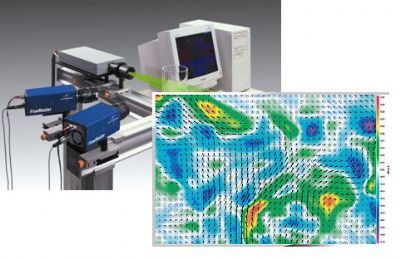方案详情文
Larval responses to hydromechanical cues potentially have important effects on larval dispersal and
settlement. This study examined the behavior of mussel larvae (Mytilus edulis) in laboratory-generated
turbulence representative of nearshore currents. We video recorded the behavior of early- and late-stage
veligers in a grid-stirred tank at five turbulence levels under light and dark conditions. Water velocities
and kinetic energy dissipation rates were measured using particle image velocimetry and acoustic
Doppler velocimetry. We characterized the vertical velocity distributions for sinking, hovering, and
swimming modes in still water and calculated the average larval behavioral velocity in turbulence. In
still water, young larvae had more positive (upward) velocities than old larvae, and both stages had more
positive velocities in light than in dark. In turbulence, the mean larval vertical velocity varied from positive
at low dissipation rates to negative at dissipation rates above a threshold of 8.3 ?1022 cm2 s23. At this
threshold, the Kolmogorov length scale (h ?590mm) was two to three times the mean larval shell
lengths (171?56mm), implying that turbulence is detectable even by larvae that are smaller than the
smallest eddies. Responses to turbulence were unaffected by larval age or light conditions and contributed
substantial behavioral variation. By sinking in strong turbulence, mussel larvae could increase their
flux to the bed in energetic coastal flows, particularly over rough substrates like mussel beds. The
response to turbulence by early-stage larvae will also affect their dispersal and may help larvae remain
near coastal populations.
智能文字提取功能测试中
关闭产品配置单
北京欧兰科技发展有限公司为您提供《贻贝幼体中湍流的反应检测方案(粒子图像测速)》,该方案主要用于其他中湍流的反应检测,参考标准《暂无》,《贻贝幼体中湍流的反应检测方案(粒子图像测速)》用到的仪器有德国LaVision PIV/PLIF粒子成像测速场仪、自适应粒子成像测速场仪(PIV)。
我要纠错
推荐专场
相关方案






 咨询
咨询